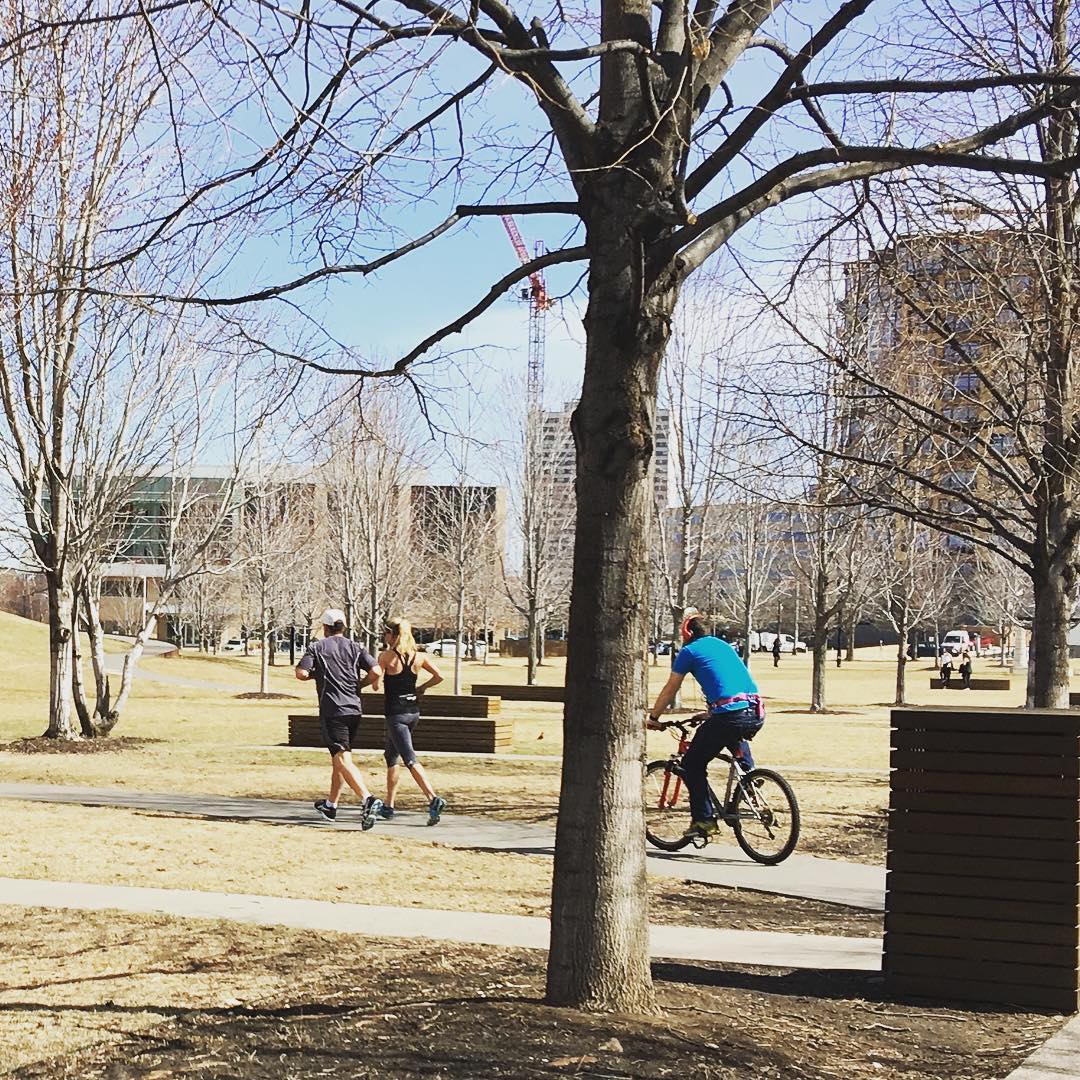Recording Podcasts on the Run
In 2017, the C Tolle Run team decided to switch over to an audio-only podcast format. Instead of doing a traditional interview-style show over Skype, we came up with the idea to record Carrie and a guest while they went for a run. As a runner myself, I know the kinds of crazy, deep, personal, and often crazy conversations that occur during the course of a 10 mile run.
As the guy responsible for capturing the audio on one of these runs, however, I was a little worried. Even if we were recording people walking, we'd have issues with wind. What are we supposed to do with people running? All of that movement is a recipe for poor audio quality.
Another issue we have is that we haven't quite hit the jackpot with sponsors yet, so I needed to find a suitable solution while running on a tight budget.
If you're reading this, you're probably looking for a good solution for a similar set of circumstances. Let me save you the time and show you what I came up with!
What didn't work
In order to get to a point where we were capturing usable audio, we experimented quite a bit. Here was our first setup: 
Take 1 included our guests using a Sony lavalier microphone with a standard, flimsy wind guard attached to it.
We quickly discovered that the Auray Fuzzy Windbuster wind guards provided a night and day difference in ability to block out wind. However, the guards did not stay attached to the microphones all that well, which is obvious if you listen to our episode with Gabe Grunewald.
In addition, because of all the movement that occurs from running, we would frequently hear rhythmic bumping and rubbing due to the cords pulling in odd places on the runners.
What does work
Transmitting the signal
Our primary goal was to get the highest quality signal we can get with the most minimal amount of equipment possible. We figured that the easiest way to do that is to switch to headset microphones.
We now use the Sony ECM322BMP Professional Headset Microphone. In our most recent on the run episode with Kirk DeWindt, both Kirk and Carrie found the headsets to be relatively comfortable, and after a couple minutes, they didn't even notice they were wearing them.
One word of warning: make sure whatever headset mic you purchase is compatible with your wireless system. I can't give a direct Amazon link to our wireless system since we bought it 7 years ago, but the modern comparison would be the Sony UWPD11/30 Lavalier Microphone, Bodypack TX and Portable RX Wireless System. We went through 3 different headset mics before just giving in and dropping the money for the mic that was compatible with our "ancient" system.
Regardless of which headset mic you get, the key piece to cutting down on wind noise is the Auray Fuzzy Windbuster wind guards. Buy at least 6 of these little guys, they are worth every penny. (Pro tip: we went through 2 of these buggers before we got smart and put some gaffer's tape around the base of the wind guard to keep it attached to the neck of the mic.)
The position of the transmitter pack seems to not really be an issue for us, so long as:
- The antenna has a good line of sight to the receiver
- The cable connecting the headset and transmitter gets a little slack
- They don't place the transmitter in the same pocket as a phone
We purchased wireless microphone belts to hold our packs, mostly so we didn't have to fuss with people wondering where the transmitter should go, but those are totally optional.
Receiving the signal

Ideally, we are working to get the receiving end down to a point where Carrie can strap it onto herself and record as she travels around the world.
Currently, the receiving rig is powered by yours truly, following the guests on a bike roughly 10-20 feet back The receivers for the wireless mics are plugged into a Zoom H4n recorder. All three components are strapped into a repurposed water bottle holder (pictured above, which doubles as a great indicator to my personal fashion sense).
Once I turn on the recorder, I immediately hit record and lock it before even plugging in the microphones. My biggest fear is losing audio, and since these things can record hundreds of hours at a time, I'd rather scrub through the audio in post than risk forgetting to hit "go" once the runners are ready.
Next Steps
Currently, our rig is limited to the two inputs of the H4n. The next two things I'd love to tackle are live streaming the audio to my phone so I can do a Facebook Live stream, and recording more than two people at once.
If you have any ideas how I can stream the audio off of a Zoom H4n into an iPhone, or how I can best record multiple people at once, let me know on Twitter and I'll give it a shot!
Also, I'll keep this blog post updated as we refine this system. If you have any suggestions on how I can improve it, give me a shout on Twitter.
One last note: those links above are Amazon Affiliate links. Feel free to strip that code off if you are offended by those types of things.